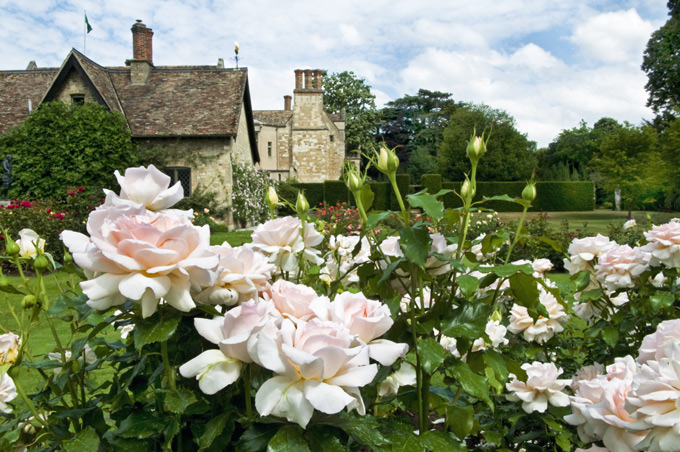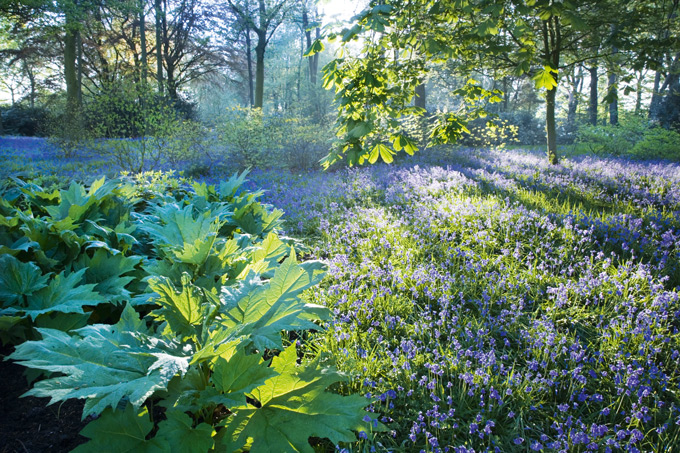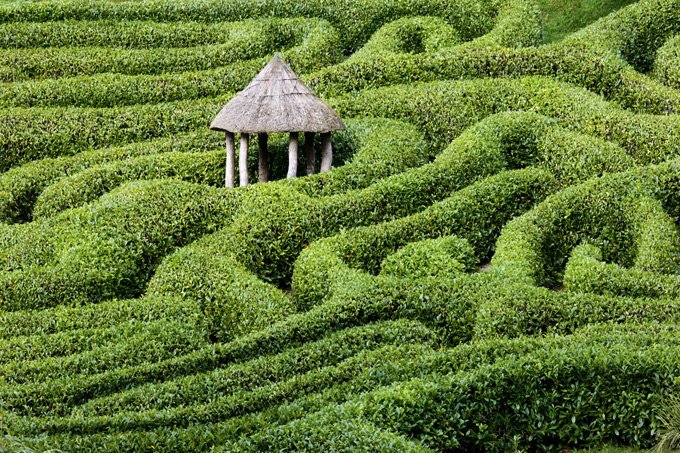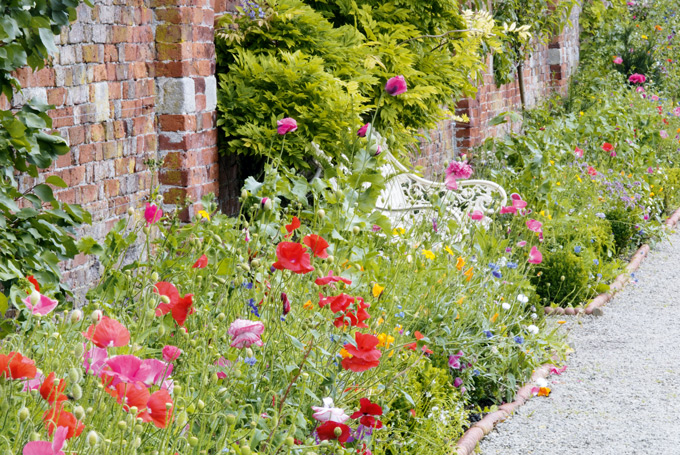
Britain has enjoyed cultivating gardens for centuries, here are some of the best.

From Roman conquerors who filled Britannia with carefully landscaped ‘outdoor rooms’ to medieval monasteries with painstakingly cared-for plots containing plants needed for cooking and medicinal purposes, Britain has enjoyed cultivating gardens for centuries and is full of exciting places to visit.
The National Trust looks after some of the most beautiful gardens in the country – some begun by just one person and now managed by teams of horticulturists.
Bodnant Garden, Conwy
Bodnant Garden in Conwy is one such place, with views over the dramatic Snowdonian mountains. A captivating hodgepodge of designs, where the hinterlands of formal sweeping lawns contain shaded dells, woodlands and streams, it is the ultimate secret garden.
Cuttings and seeds from all over the world contribute to the opulence of Bodnant, which was established in the 1870s by Victorian entrepreneur Henry Davis Pochin. Bodnant has been in the same family for five generations and their horticultural efforts are impressive: subtle planting interspersed with brilliant bursts of colour reveal nooks and crannies just begging to be explored. In the summer, the famous laburnum arch thrives with pendulous clumps of yellow flowers, creating an otherworldly 55-metre floral tunnel.
Hidden at the heart of the garden is The Poem, the beautiful mausoleum built by Pochin to serve as the resting place for the family who made Bodnant the botanical spectacle it is today. Shrouded in trees and foliage, The Poem is made of pale stone set with ornate stained-glass windows. The spot where Bodnant’s rhododendron valley meets the River Hiraethlyn is one of the garden’s most breathtaking features. The Dell is hopelessly romantic: tall slender trees stretch skywards while shining sheets of waterfall cascade down to join the river rapids.

Dunham Massey, Cheshire
Dunham Massey in Cheshire is one of the Trust’s more recent acquisitions, left to the charity in 1976. Dunham Massey flourishes year round, and by spring a carpet of single and double snowdrops cover plenty of the estate, which spreads over 30 acres.
A daily guided walk enables you to discover the history of Dunham Massey, which was a hospital for soldiers injured in World War I, as well as view flora that grows in its grounds. Tree-lined avenues offer a splendid approach to the deer park, which opens into expanses of green.

Glendurgan Garden, Cornwall
Another garden created with peacefulness in mind is Glendurgan in Cornwall, which, like Bodnant, has benefited from foreign flora. Planted over three valleys, Glendurgan contains a fabulous subtropical garden that sprawls like a jungle along the coast.
Created in the 1820s by shipping agent Alfred Fox, who collected plants from faraway parts of the world, Glendurgan has a climate that allowed plants to prosper in a way that was impossible in less clement parts of Britain. South African plants, exotic succulents and even bananas grow in this arid microclimate.
The laurel maze was laid out in 1833 by Fox as a means of entertaining his children. Fox was strict when it came to his labyrinth, fining anyone who tried to break through the hedges in a desperate bid for freedom. Glendurgan is a garden dominated by water, which lies still in its ponds, flows under the bamboo bridge and trickles along in streams.
Fox, a Quaker, planted trees – such as the Tree of Heaven – reflecting his faith on a part of his garden known as the Holy Bank. He meant Glendurgan to be a “small piece of heaven on earth”, and it remains so.

Sizergh Castle, Cumbria
Further north in Cumbria, Sizergh Castle is the gateway to the Lake District and is arguably the jewel in the region’s crown. Initially built as a defensive fortress against the Scots, it has been occupied by the Strickland family since 1239. The 16-acre garden is enchanting with its pond, lake and a world-renowned limestone rock garden that was built between 1926 and 1928.
Sizergh sprawls over 1,600 hectares, including orchards and semi-natural woodland. Look out for the mighty sweet chestnut trees, the seeds of which are thought to have been brought back to the castle by Cecilia Strickland in the late 18th century, when she returned from Versailles.

Anglesey Abbey, Cambridgeshire
Another garden with links to the medieval period is that of the Jacobean-style Anglesey Abbey in Cambridgeshire, built on the foundations of a 12th-century Augustinian priory and the vision of Lord Fairhaven, who created a spectacular landscape to impress his guests in the 1930s.
What was once a run-down ruin in unkempt countryside has, over the last 80 years or so, blossomed into gardens bursting with surprises. Lord Fairhaven transformed his home garden from a diminutive five-acre plot to a landscape of almost 100 acres by his death in 1966, when the property was gifted to the National Trust.
Lord Fairhaven collected statues – often with mythical or biblical connotations – that he dotted around the garden, most notably in the Emperor’s Walk, where visitors are watched by 12 stone busts of Roman emperors.
The Rose Garden is a sensory triumph: it’s not only beautiful to look at but the aroma of 1,000 hybrid tea roses makes for a heady experience from July to September. When the temperature dips, the Winter Garden thrives. Here you’ll find unusual shrubs and bulbs as well as the famous grove of Himalayan Silver Birch trees (in the spring and early summer bright pink tulips bloom around the base of the trees). The whole of February is a tribute to snowdrops as a carpet of 270 different types of the delicate flower covers the ground.
Related articlesTudor gardens: everything you ever wanted to know |
Click here to subscribe! |
Download BRITAIN Magazine to your mobile today

 No mobile device? Purchase directly on Zinio for your desktop!
No mobile device? Purchase directly on Zinio for your desktop!





 © 2024
© 2024